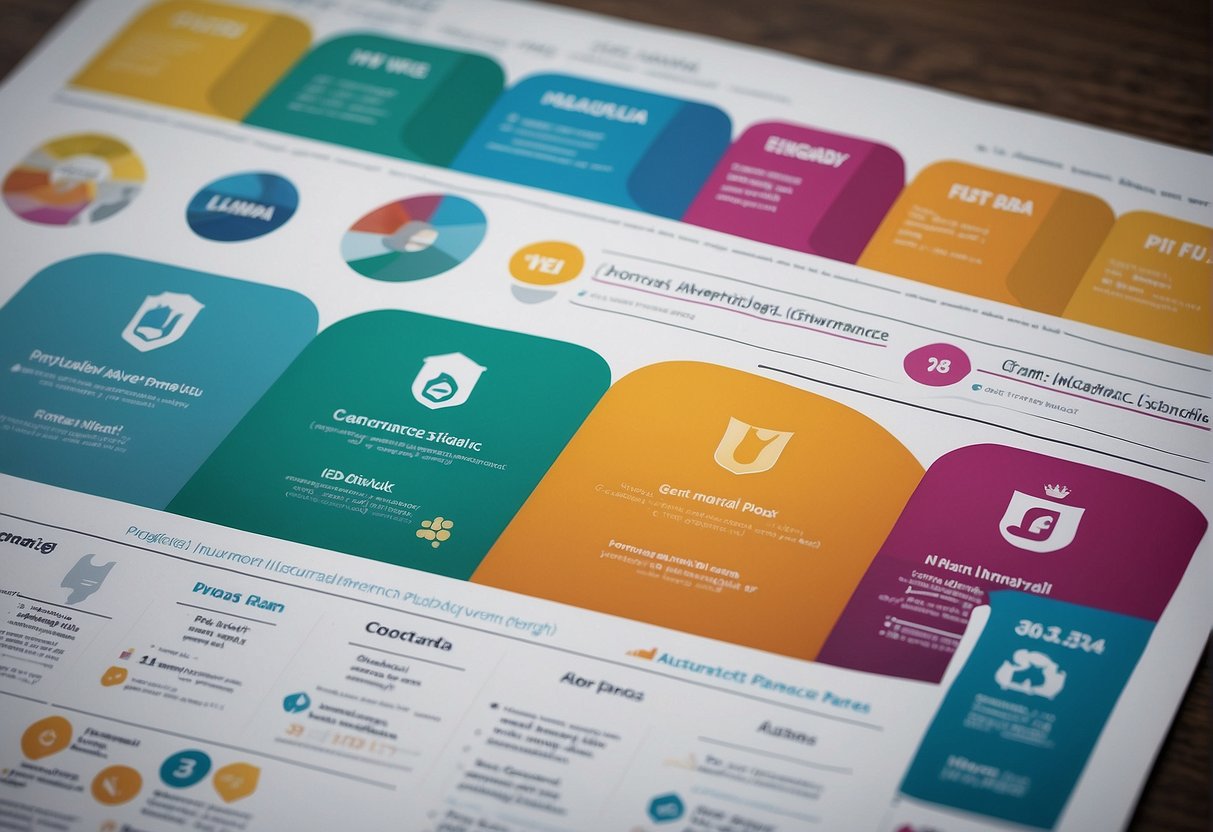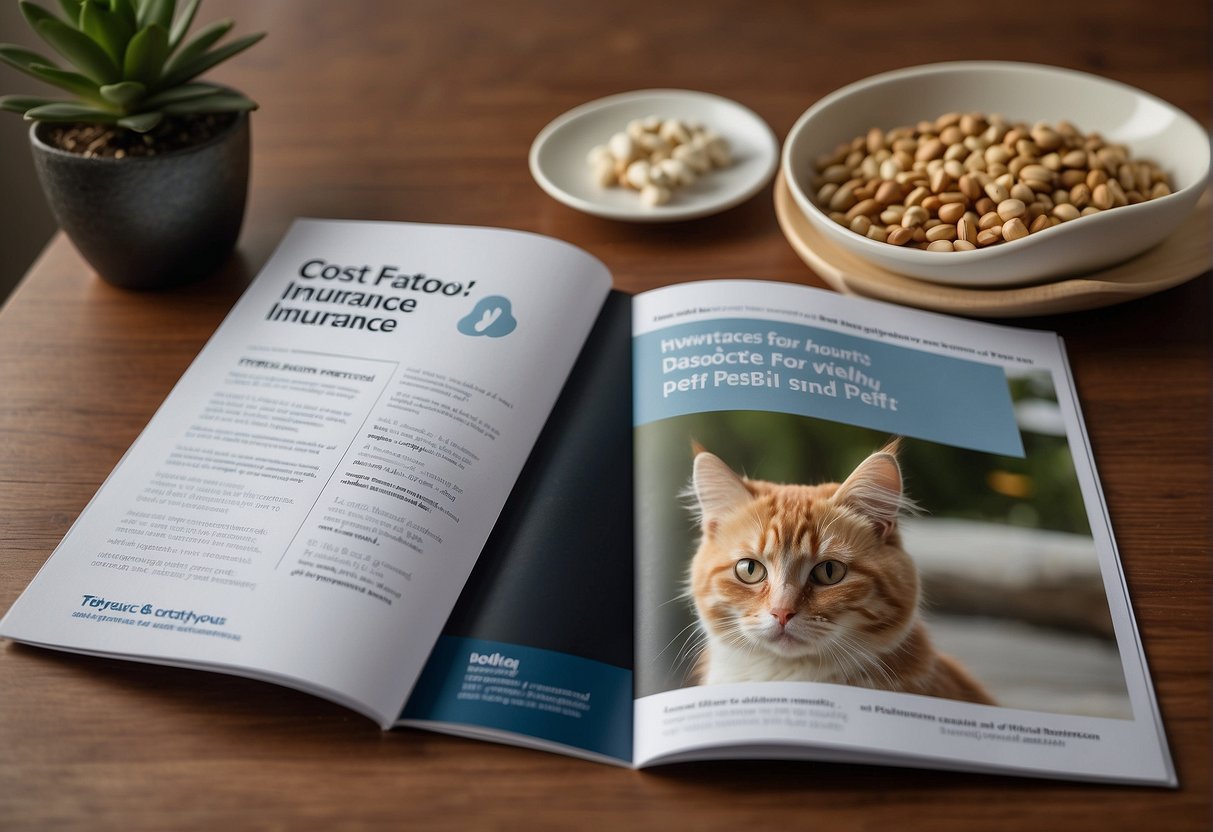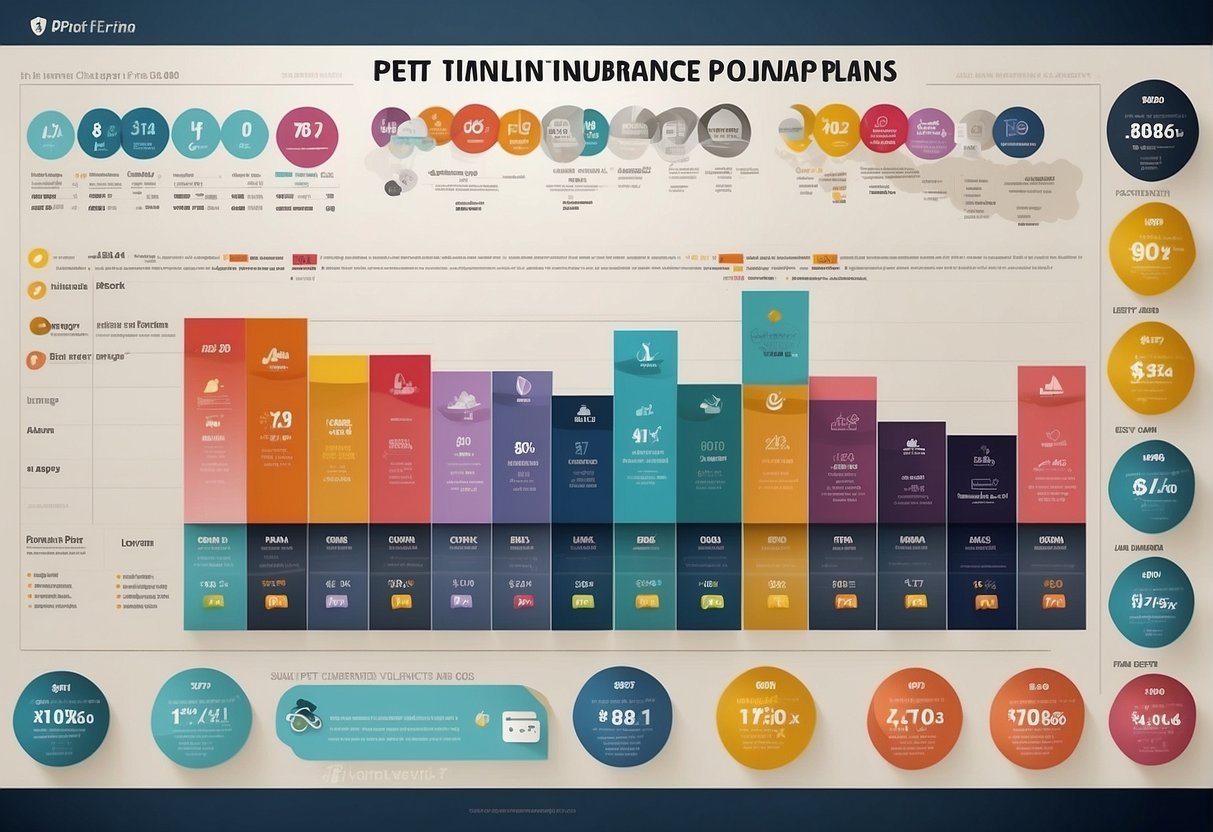How much does pet insurance cost in Australia? Understanding Prices and Policies

How much does pet insurance cost in Australia? Understanding Prices and Policies
Pet insurance in Australia provides a safety net for pet owners, offering financial protection against unexpected veterinary costs. With a nation of pet lovers, the importance of having a pet insurance policy is on the rise as veterinary care advances and becomes more expensive. Policies vary significantly in their coverage and, accordingly, their costs, making it essential for pet owners to understand what they’re purchasing.

The cost of pet insurance is influenced by a number of factors such as the type of policy, the level of coverage you choose, your pet’s breed and age, and even where you live in Australia. Comprehensive policies that cover both accidents and illnesses tend to be more expensive, while basic accident-only coverage is usually more affordable. Premiums can also be affected by the option of adding on routine care, and whether you opt for a higher excess to lower your premiums.
Key Takeaways
- Pet insurance mitigates financial risk from unexpected vet bills.
- Policy costs vary by coverage level, pet species and breed, and other factors.
- Choosing the right insurance requires balancing cost with desired protection level.
Understanding Pet Insurance

Selecting the right pet insurance requires knowledge of the types of policies available, the scope of coverage, and the value it provides to pet owners. Understanding these factors ensures that pet owners can make well-informed decisions about their pets’ health and financial well-being.
Types of Pet Insurance
Pet insurance in Australia is categorised into three main types: accident-only, accident and illness cover, and comprehensive. Accident-only policies are the most basic, providing coverage for injuries such as bites or fractures. Accident and illness cover extends to a range of illnesses in addition to injuries. Comprehensive policies offer the broadest level of protection, covering accidents, illnesses, and sometimes routine care and preventative treatments.
What Does Pet Insurance Cover?
Coverage under pet insurance typically involves paying for treatments related to unexpected injuries or illnesses. This may include diagnostic tests, surgeries, medications, hospital stays, and sometimes even alternative therapies. However, coverage varies between policies and insurers – some may provide coverage for hereditary conditions, whilst others might exclude them.
The Importance of Pet Insurance
For many pet owners, pet insurance provides peace of mind knowing that they can afford critical care when faced with unexpected veterinary expenses. While it is an added monthly cost, it can mitigate the financial impact of an animal’s illness or injury, ensuring they receive the necessary treatment without the burden of large out-of-pocket expenses.
Pet Insurance Companies

Australia hosts a variety of pet insurance companies, providing different levels of cover for pets. These companies offer plans ranging from basic to comprehensive coverage, tailored to meet the needs of pet owners and their furry companions. Here is a brief overview of some notable pet insurance providers in Australia:
- Pet Insurance Australia stands out for its Major Medical Plan, delivering robust options for pet health cover, including hereditary conditions which may affect certain breeds.
- Knose Pet Insurance offers a straightforward approach to pet insurance, reimbursing pet owners for a significant portion of veterinary costs after any applicable excess has been deducted.
- Finder’s comparisons suggest comprehensive pet insurance typically ranges between $81 and $120 per month. Within this bracket, companies offer varying levels of excess, coverage limits, and reimbursement rates.
- Top10PetInsurance provides a side-by-side comparison of insurers, allowing pet owners to evaluate the best cover for their pets and understand what percentage of vet bills are paid by the insurer.
- CHOICE delivers detailed comparisons of pet insurance policies, encouraging informed decisions by highlighting factors like excess payment options and what portion of vet bills the insurance is willing to cover.
The comparison platform Canstar is noted for its extensive comparison service, including more than 30 pet insurance providers, thereby making it easier for pet owners to save money on veterinary expenses while ensuring their pets receive the best care possible.
Pet owners are advised to carefully review policy details, as coverage options and costs can vary widely among providers. It is essential to consider the individual needs of their pet, including breed-specific conditions, when choosing an insurance policy.
Cost Factors for Pet Insurance

The cost of pet insurance in Australia is influenced by various factors ranging from the type of animal you have to the specifics of the insurance policy you choose.
Breed and Age Factors
The breed of the pet significantly affects the cost of insurance. Certain dog breeds, known for hereditary conditions, may warrant higher premiums. Similarly, the age of the pet is crucial; older animals often incur higher insurance costs due to an increased likelihood of health issues.
Location and Gender Effects
Premiums can also vary depending on the location where the pet owner lives. Insurance in urban areas might be higher due to elevated veterinary costs. Additionally, the gender of a pet can influence insurance rates; some insurers consider gender when assessing risk for certain conditions.
Type of Policy and Coverage
Finally, the type of policy and the extent of coverage are pivotal in determining the price. Options range from accident-only to comprehensive policies with add-ons for routine care. Reimbursement levels and deductible amounts chosen by the pet owner further customize the cost.
Price of Policies
In Australia, the cost of pet insurance varies based on multiple factors, including the type of pet and the level of coverage selected. Understanding the average costs and how premiums compare among providers can help Australians choose the most suitable pet insurance.
Average Costs of Pet Insurance
The average monthly cost for comprehensive pet insurance in Australia generally ranges from $81 to $120. However, this can fluctuate depending on specific variables such as breed, age, and hereditary health conditions, which may increase the premiums for certain pets. For example, Finder states that due to hereditary conditions, some breeds may incur higher costs.
Comparison of Premiums by Providers
When comparing pet insurance premiums across providers, Australians will note significant variations. Each insurer determines premiums based on the type of pet, the pet’s age and breed, the selected level of coverage, and sometimes even the region where the policyholder lives.
For instance, Hepper’s 2024 Update on pet insurance costs indicates that pet owners can expect monthly premiums to fall between $50 and $100, with both lower and higher premiums available depending on the policy details. Insurers like Compare the Market also provide insights into how accident-only cover is less expensive compared to policies that include illness cover and routine care benefits.
To make an informed decision, prospective policyholders should not only compare pet insurance costs but also consider what percentage of the vet bill is covered, excess payment options, and included benefits. Platforms such as CHOICE can assist in the review and comparison of various policies.
Policy Details

When choosing pet insurance in Australia, one should carefully consider the specific exclusions and limits of the policy, as well as any waiting periods and the treatment of pre-existing conditions.
Exclusions and Limits
Policies typically have listed exclusions which detail the services and conditions that are not covered. Examples include:
- Routine and preventative treatments (e.g., vaccinations, flea control)
- Elective procedures (e.g., desexing, unless it’s part of a covered condition)
- Hereditary conditions (dependent on the policy)
Limits are also crucial; this is the maximum amount the insurer will pay. There are general annual limits as well as sub-limits for certain conditions or treatments. Some insurers also have lifetime limits for specific illnesses.
Waiting Periods and Pre-Existing Conditions
Insurers enforce waiting periods before coverage begins for certain conditions:
- Accident coverage often starts within a few days
- Illness coverage may start after a waiting period, typically 30 days
Pre-existing conditions that occur before the policy’s start or during a waiting period are usually not covered. Transparency about an animal’s health history is essential when obtaining a policy to ensure accurate coverage.
Insurers may differentiate between curable and incurable pre-existing conditions, affecting how they’re covered if the pet becomes insured.
Claims and Reimbursements

When dealing with pet insurance in Australia, policyholders need to understand the process of lodging claims and what they can expect in terms of reimbursements. This will ensure clarity on how much of the vet bills they will be responsible for, and how much the insurer will cover.
Making a Claim
To make a claim, the policyholder must submit the required documentation to their insurer, which typically includes the vet bill and any relevant medical records. Promptness in this process is crucial, as delays can affect the reimbursement timeline. The insurance company will then assess the claim, taking into account factors such as pre-existing conditions which may not be covered.
Understanding Reimbursement Rates
Reimbursement rates refer to the percentage of the vet bill that the insurer agrees to pay after any excess is subtracted. In Australia, pet insurance does not usually cover the full claim; for instance, if a policy has a $500 excess and the treatment costs $5,000, the insurer would cover $4,500 of the claim after the excess is paid by the policyholder. Additionally, the actual reimbursement is often affected by whether the condition claimed for is related to any pre-existing conditions that the pet may have.
Additional Considerations

When considering pet insurance in Australia, one must not overlook the influence of routine and preventative care options, as well as the impact of veterinary advancements on insurance costs.
Routine and Preventative Care Options
Within most pet insurance plans, extras such as routine and preventative care can affect the overall cost. This includes coverage for annual vaccinations, dental care, and certain medications that contribute to the ongoing health of pets. Generally, these provisions are part of a higher-tier plan, adding value but also increasing premiums. For example, an Essentials Cover might reimburse up to 90% for these services.
Impact of Veterinary Advancements
The field of veterinary medicine is continuously evolving in Australia. Technological advancements and the development of specialised treatments mean that vet costs can rise. As state-of-the-art medication and dental care techniques become available, insurance providers may adjust their premiums to reflect these higher veterinary costs. These advancements often lead to better outcomes for pets but come at an increased financial cost for pet owners and insurers.
Choosing the Right Policy

When selecting pet insurance in Australia, it’s crucial to compare offerings from different insurers and to understand the types of discounts available. This ensures that one finds a policy that not only offers comprehensive cover but also the best value for their specific needs.
Comparing Different Insurers
Insurers offer a range of policies from accident-only cover to more extensive comprehensive cover, which includes illness and sometimes routine care. A prudent comparison of the market reveals substantial variations in premiums and cover options. Websites like Finder can provide a cost breakdown, while CHOICE offers expert comparisons of different policies. They are invaluable for reviewing what percentage of the vet bill is covered, the options regarding excess payments, and the policy limits.
Key Points:
- Premiums and cover levels vary widely.
- Utilise reputable comparison services.
Evaluating Customer Offers and Discounts
Pet insurers may provide offers and discounts to attract new customers or reward loyal ones. These can include a multi-pet discount for those insuring more than one animal, which can make a noticeable difference to the annual insurance costs. For instance, specific policies might offer a 10% multi-pet discount, making them a preferable choice for multi-pet households. It’s worth investigating these opportunities in greater detail by directly visiting insurance providers’ sites or using comparative tools to factor these savings into the overall insurance cost.
Key Points:
- Look for discounts: multi-pet discounts can reduce costs.
- Direct insurer queries can reveal unadvertised offers.
Choosing the proper insurance policy is a balance between finding adequate coverage and receiving good value. By conducting thorough comparisons and paying attention to offers, one can secure a policy tailored to their pet’s needs while also being kind to the wallet.
Saving on Pet Insurance

Securing pet insurance can be a significant financial decision for pet owners in Australia. Heeding the right strategies can lead to substantial savings while ensuring pets have the coverage they need.
Utilising Discounts and Extras
Pet owners should compare policies carefully to identify discounts and extras that can save money. Some insurers offer reduced rates for multiple pets, while others might provide lower premiums for microchipped animals or for those belonging to a pet owners’ association. Additionally, extras such as routine care or dental cleanings are often packaged as optional extras but can prove beneficial if they match the pet’s needs.
The Long-Term Benefits of Insurance
Investing in pet insurance can bring long-term benefits. While monthly premiums may seem like an added expense, they typically outweigh the financial burden of unexpected veterinary costs in the long run. Coverage can greatly reduce the price of surgeries, chronic conditions, and emergency treatments. It’s vital that pet owners assess their potential savings over their pet’s lifespan when considering insurance options.
Frequently Asked Questions
When considering pet insurance in Australia, it’s critical to note the variability in costs that are influenced by multiple factors such as the type of animal, breed, and level of cover chosen.
What are the average monthly costs for pet insurance in Australia?
The average monthly costs of pet insurance can range between $20 and $60. These figures are indicative and depend on a range of factors including the pet’s age and health.
What is the typical annual cost for pet insurance in Australia?
Providers like Pet Insurance Australia highlight that annual benefit limits can vary widely, with typical annual caps for comprehensive policies at around $30,000, and $6,000 for basic policies.
How do insurance premiums differ for dogs and cats in Australia?
Insurance premiums for dogs and cats can differ substantially, often due to different breeds having various hereditary conditions that may significantly affect the cost.
What factors determine the price of pet insurance in Australia?
Factors influencing the price of pet insurance include the pet’s age, breed, pre-existing health conditions, and the level of cover selected. Geographic location in Australia can also play a role.
How cost-effective is investing in pet insurance in Australia?
Investing in pet insurance can lead to significant savings on unexpected veterinary costs, aligning with the cover limits and terms set out in the policy. The cost-effectiveness is influenced by how frequently the insurance is utilised for eligible claims.
What are the most affordable pet insurance policies available in Australia?
The affordability of pet insurance policies will fluctuate based on the insurance provider, policy terms, and the specifics of the pet insured. Seeking out quotes and comparing policies are essential steps in finding the most affordable options.


